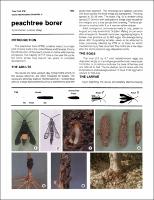peach tree borer life cycle
In the spring feeding is resumed and the larval period is completed. One generation a year.

Peach Tree Borers How To Control Peach Tree Borers
Winter is spent as a larva under the bark in the cambium layer.
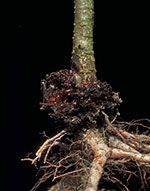
. The borer has a two-year life cycle. Egg laying begins soon after emergence and mating and larvae tunnel into the bark to feed until the. Peach Tree Borers feed under the bark of Peach trees and are a serious pest in commercial peach orchards.
Mass of gummy sawdust appears at base of trees. Larvae tunnel primarily into the lower trunk and roots feeding on growing tissue and inner bark. BIOLOGY AND LIFE CYCLE.
Only the immature larva stage Figure 3 produces the damage to trees. Peach tree borer injury is less common here on plums and cherries but might occur. The lesser borer completes about one and one-half cycles a year.
Life Cycle The period of time required to complete a life cycle varies considerably throughout the range of the peachtree borer. The presence of small particles of wood and bark within the gum distinguish damage by peachtree borer Life History and Habits The life cycle of the peachtree borer requires one year to complete. The period of time required to complete a life cycle varies considerably throughout the range of the peachtree borer.
The adults are clear-winged day-flying moths which are often mistaken for wasps. The clear-winged female moths lay their eggs on the bark at the base of tree trunks in mid- to late-summer. Eggs typically are inserted into the bark of the trunk near the ground although eggs may occasionally be laid in tree crotches.
Peachtree borer has a single generation per year but it can result in severe losses if not managed correctly. The peachtree borer overwinters as a partly grown larva in its burrow beneath the bark of the tree. The larval stages of the peach borer spend their lives hidden under the bark near the base of the tree and just below the soil line.
Borers chew inner bark of lower tree trunk. The lesser peachtree borer overwinters as larvae and reaches full growth during April and May. It is reported that it takes two years to complete a life cycle in Canada and in a small percentage of populations in New York.
Produced by peachtree borer. Adult moths of the lesser peachtree borer emerge from late May through September while peachtree borers emerge from midJune to early September. The pests life cycle and treatment is similar to those of exitiosa.
This borer overwinters in a wide range of larval stages. In the spring larvae feed briefly pupate and emerge as adults 3 to 4 weeks later. Life Cycle and Damage.
Lesser peach tree borers attack higher on the trunk and scaffold branches. The partially grown larvae overwinter and resume feeding in the spring as the tree begins growth. Larvae become active and resume feeding in April with larger larvae.
Upon hatching from the eggs Figure 4. They pupate in burrows or in brown cocoons in the soil. They also attack Plums and Cherry trees in the residential landscape and can weaken and eventually kill these trees by girdling the trunks under the bark.
Damage Any wound on stone fruit trees may cause gum to exude. Lesser peach tree borers have a life cycle very similar to that of peach tree borer but the timing and location of attack are slightly different. The period of time required to complete a life cycle varies considerably throughout the range of the peachtree borer.
The moths emerge in late May and emergence continues throughout the summer. Peach plum apricot cherry and other fruit trees. Adults begin emerging in late spring and early summer from larvae that have overwintered inside the tree an inch or two beneath the soil line.
In 3 to 4 weeks a clearwinged moth emerges leaving an empty pupal skin projecting from the burrow. Unlike most moths LPTB are active during the day usually between mid-morning and mid-afternoon. The peachtree borer overwinters as a partly grown larva in its burrow beneath the bark of the tree.
When peaches are in bloom the earliest lesser peachtree borers have completed feeding and begin to pupate. Because the egg laying period is so long overwintering larvae vary greatly in size. Identifying Peach Tree Borer.
Usually they are close to or below ground level. Much of the United States including Texas and Nebraska has one generation per year. Skip to Life history.
Adult beetles usually appear in May and June with egg-laying continuing until late July. The adult borer emerges in the late spring and early summer. Hatching larvae tunnel into the tree at or slightly below ground level.
In the spring feeding is resumed and the larval period is completed. Peach tree borers overwinter as partially grown larvae in a gallery under the bark. In the spring feeding is resumed and the larval period is completed.
LPTB overwinter as partly-grown larvae in galleries underneath tree bark. They continue to emerge throughout the. The adult peachtree borer is a steel blue to black moth that resembles a wasp.
Much of the United States including Texas and Nebraska has one generation per year. Life cycles of peachtree borers and lesser peachtree borers. Larvae eat an exit hole nearly through the bark spin a cocoon and pupate in a small cavity.
The lesser peachtree borer completes its life cycle in one year. Borer damage is usually attended by gumming with varying amounts of frass in the gum. This is in contrast to lesser peachtree borer which may feed on any part of the tree Root feeding leads to reduced crop bearing capacity due to lack of nutrient uptake while heavy trunk feeding can.
It is reported that it takes two years to complete a life cycle in Canada and in a small percentage of populations in New York. Larvae hibernate in tree burrows or in soil. Larva emerge from eggs typically laid in May and June and the larva immediately move into the bark of the tree through cracks and wounds in the surface.
The peach tree borer completes one life cycle a year. When mature the larva constructs a cocoon under the bark at or near soil level and pupates. It is reported that it takes two years to complete a life cycle in Canada and in a small percentage of populations in New York.
The larval stage of PTB is an indirect pest of stone fruit trees.
Pests Bc Tree Fruit Production Guide
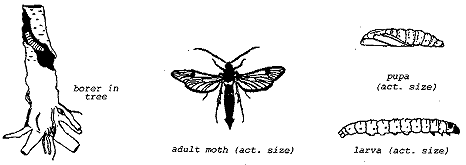
Lords Environmental Peach Tree Borers
Eny 691 In489 Peachtree Borers In The Home And Commercial Peach Orchard
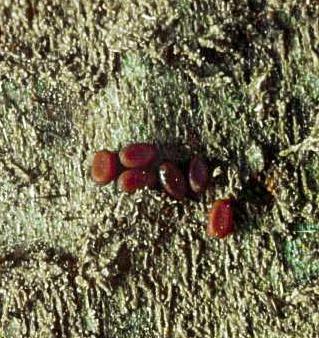
Peachtree Borer Nc State Extension Publications

Lesser Peachtree Borer Nc State Extension Publications

Peachtree Borer Dummer Garden Manage Gfinger Es La App De Jardineria Mas Profesional

Peachtree Borer 5 566 Extension
Peachtree Borer Wsu Tree Fruit Washington State University

Peach Tree Borer Treatment Control Planet Natural

Goes To Show You Don T Ever Know Plant Pest Advisory
Pests Bc Tree Fruit Production Guide

Lesser Peachtree Borer Damage Stock Image C025 7085 Science Photo Library
Pests Bc Tree Fruit Production Guide
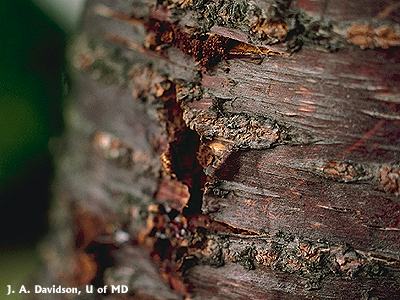
Peach Tree Borer Fairfax Gardening
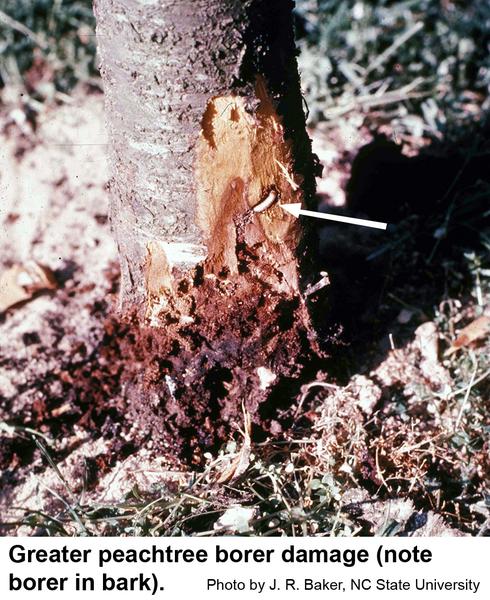
Greater Peachtree Borer In The Landscape Nc State Extension Publications

